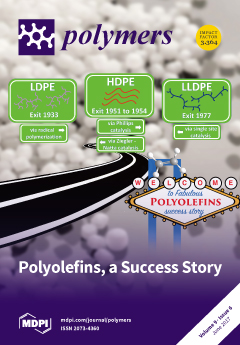Open AccessArticle
A Novel Heterogalactan from Antrodia camphorata and Anti-Angiogenic Activity of Its Sulfated Derivative
by
Yanqiu Liu 1,2,†, Yaqi Ding 1,3,†, Min Ye 4, Tao Zhu 2,*, Danbi Tian 3,* and Kan Ding 1,*
1
Glycochemistry and Glycobiology Lab, Shanghai Institute of Materia Medica, Chinese Academy of Sciences, 555 Zu Chong Zhi Road, Shanghai 201203, China, University of Chinese Academy of Sciences, No. 19A Yuquan Road, Beijing 100049, China
2
Nano Science and Technology Institute, University of Science and Technology of China, 96 Jin Zhai Road, Hefei 230026, China
3
Department of Chemical and Molecular Engineering, Nanjing Tech University, 30 Puzhu South Road, Nanjing 211816, China
4
State Key Laboratory of Natural and Biomimetic Drugs, School of Pharmaceutical Sciences, Peking University, 38 Xueyuan Road, Beijing 100191, China
†
Yanqiu Liu and Yaqi Ding contributed equally to this work.
Cited by 11 | Viewed by 4784
Abstract
A heterogalactan, named ACW0, was extracted from
Antrodia camphorata and purified by anion exchange and gel permeation chromatography. It was composed of galactose (94.98%), traces of mannose (2.41%), and fucose (2.61%), with its molecular weight estimated to be 13.5 k Da. The polysaccharide
[...] Read more.
A heterogalactan, named ACW0, was extracted from
Antrodia camphorata and purified by anion exchange and gel permeation chromatography. It was composed of galactose (94.98%), traces of mannose (2.41%), and fucose (2.61%), with its molecular weight estimated to be 13.5 k Da. The polysaccharide ACW0 was shown to be a mannofucogalactan with a backbone chain of α-
d-1,6-linked Gal, attached by a non-reducing terminal α-
d-Man and α-
l-Fuc on C-2 of nearly every six α-
d-1,6-linked Gal residues. A sulfated polysaccharide, ACW0-Sul was achieved by the chlorosulfonic acid-pyridine method. Compared with the native polysaccharide, ACW0-Sul could disrupt tube formation and migration as well as cell growth of human microvascular endothelial cells (HMEC-1) dose-dependently. Further studies revealed that phosphorylation of Extracellular Regulated Protein Kinases (Erk) and Focal Adhesion Kinase (FAK) were significantly inhibited by ACW0-Sul. These results suggested that ACW0-Sul could be a potent candidate for anti-angiogenic agent development.
Full article
►▼
Show Figures






